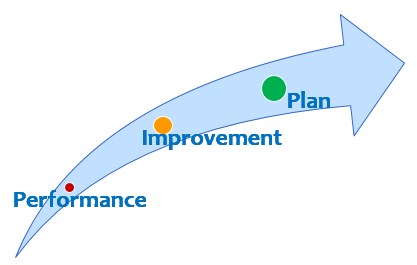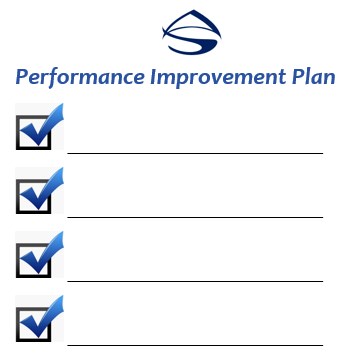Creating a Performance Improvement Plan (PIP)
Performance Improvement Plan (PIP) is a tool used to give an employee with performance deficiencies the opportunity to succeed. The plan identifies the performance issues, sets performance goals, and outlines a plan for reaching those goals.
12 Steps to creating a Performance Improvement Plan
- Document the issues or behaviors that are causing problems
- State the level of performance that is expected
- Establish a timeline for improvement
- Specify possible consequences if the performance standards are not met
- Identify resources that will be provided to assist the employee
- Set a schedule for meeting with the employee
- Communicate the plan to the employee
- Get commitment from the employee
- Monitor progress and evaluate performance
- Provide regular feedback to employee
- Measure and document results
- Discuss final results with employee

CREATING A PERFORMANCE IMPROVEMENT PLAN
Document the issues or behaviors that are causing problems
The first step in creating a Performance Improvement Plan is to identify and document the issues or behaviors that are causing the problem. You should state the exact performance that must be improved; be specific and cite examples of when they failed to meet expectations.
State the level of performance that is expected
Clearly identify the performance expectations that need to be met. These should be clear and measurable goals.
Establish a timeline for improvement
Improvement cannot happen overnight. Therefore, outline a plan that identifies specific timeframes for certain goals to be met. The plan should specify the measurements you will consider in evaluating the employee’s performance and progress.
Specify possible consequences if the performance standards are not met
There needs to be clear consequences if the employee continues to fall short of the required performance level. These consequence need to be documented so the employee is aware of what will happen if they do not met expectations.
Identify resources that will be provided to assist the employee
If there are any resources that can help the employee achieve the required results, these should be noted so the employee is aware of the availability of these resources. Resources may include training sessions, job aids, videos, procedure memos, or other employees.

Set a schedule for meeting with the employee
Setting regular meetings is pertinent to the success of the plan. You should specify meeting times along with who will attend. These meeting will allow constant communication between yourself and the employee, and it will help ensure the plan stays on track.
Communicate the plan to the employee
After the written plan is documented, an initial meeting should be held with the employee to ensure they know what is expected of them. During the meeting, you should inform the employee of the expectations, timelines, resources and consequences.
Get commitment from the employee
During the initial meeting with the employee, you should get a verbal and written commitment to the plan. This is to ensure the employee is committed to improve his or her performance and knows what is expected of them. It would not be beneficial to the employee or the organization if the employee was not committed to improving.
Monitor progress and evaluate performance
You should monitor the employee progress and evaluate their performance levels on a regular basis. Those evaluation results should be communicated to the employee as they are obtained.
Provide regular feedback to employee
After you review the employee’s performance, you should provide immediate feedback to help the employee continue to improve. Feedback should be clear and concise, as well as encouraging and motivational. Effective feedback will allow the employee to improve their performance. It is not necessary or prudent to wait for a set meeting to provide the employee with feedback. The more immediate the feedback, the easier it is for the employee to change behaviors.
Measure and document results
Performance levels should be measured and documented throughout the process. Having hard data to support the employee progress or lack of progress is important when making a decision on next steps.
Discuss final results with employee
After you have measured and documented the final results, you should sit down and discuss those results with the employee. During the meeting, in addition to discussing the results, you should discuss the next steps for the employee.
